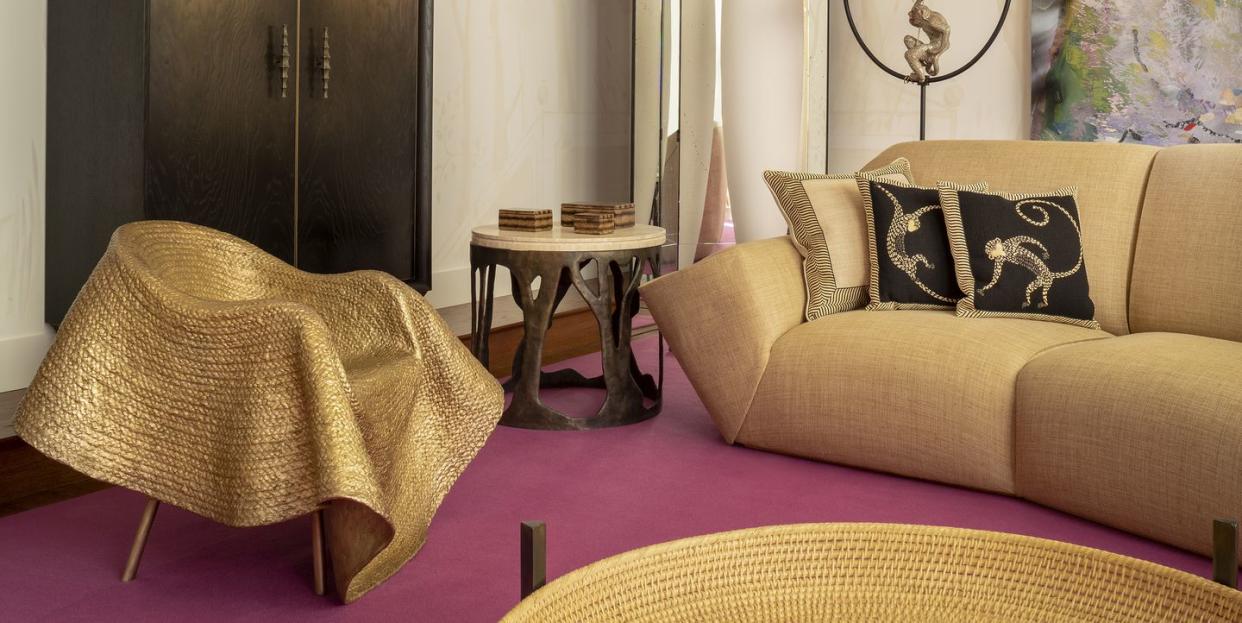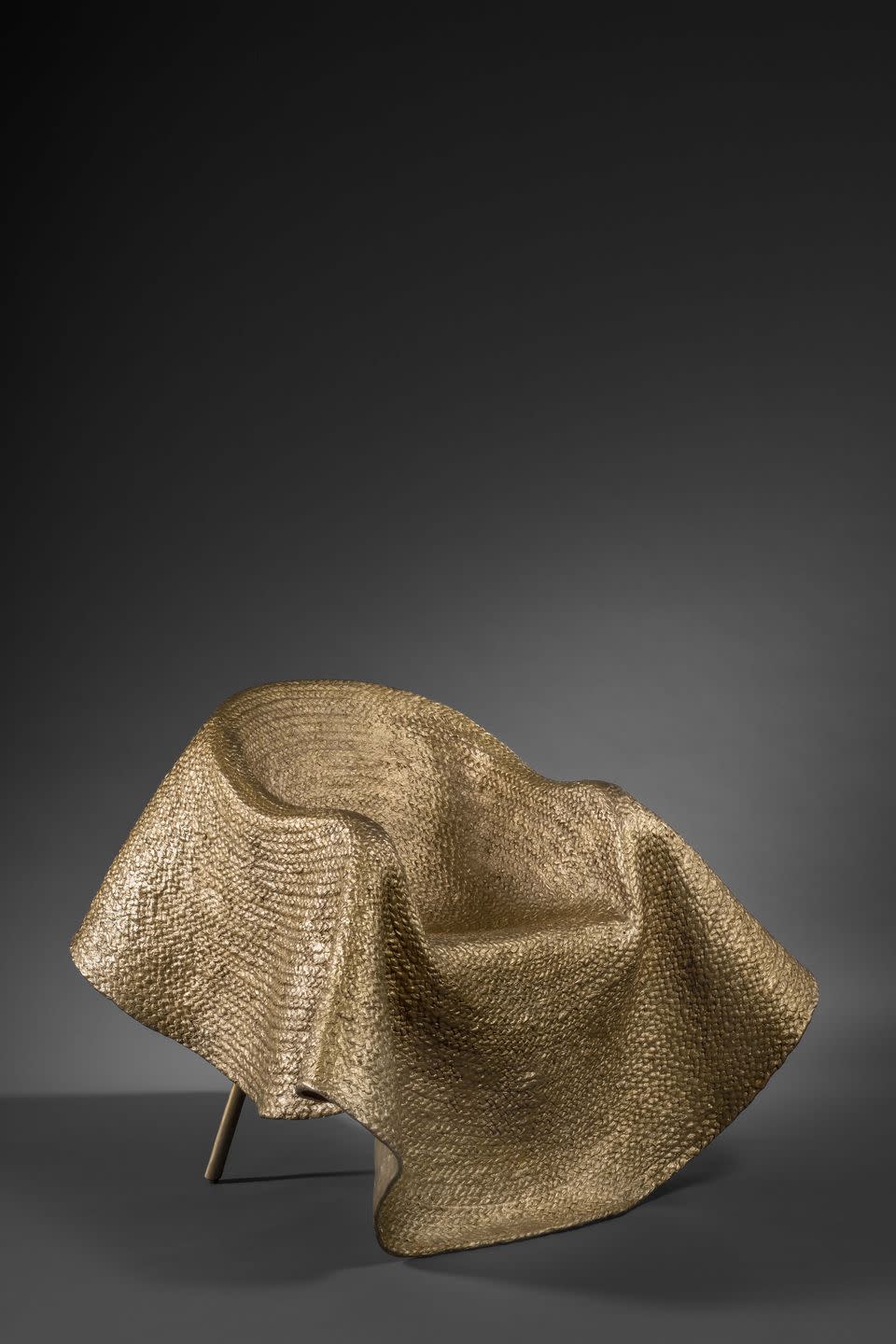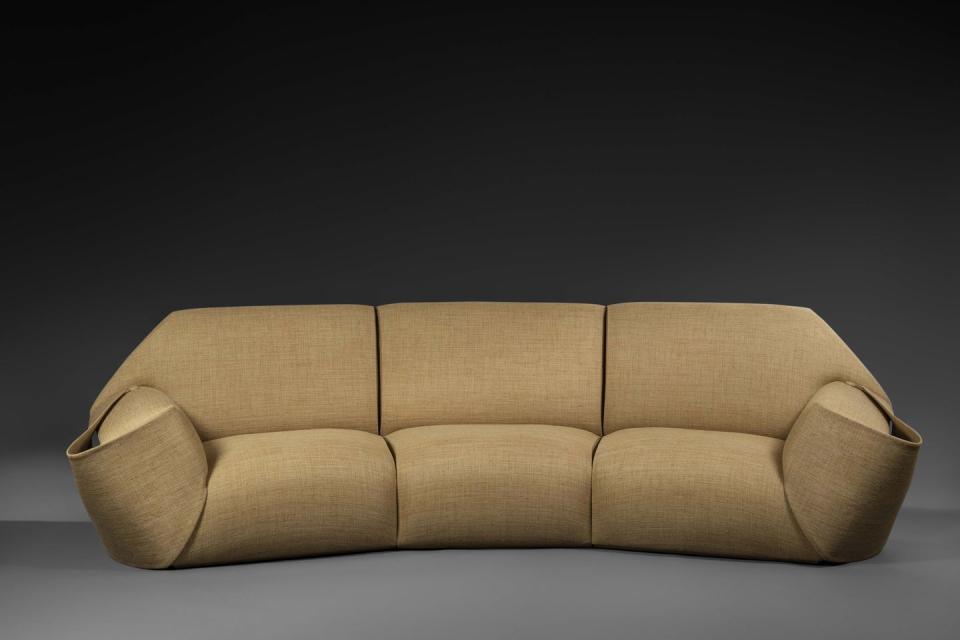The Best-Dressed Chair in the World

- Oops!Something went wrong.Please try again later.
- Oops!Something went wrong.Please try again later.
- Oops!Something went wrong.Please try again later.
The French design firm Pinto has a storied place in fashion history: Its late founder, the interior designer Alberto Pinto, was a close friend of both Hubert de Givenchy and Yves Saint Laurent. For Pinto’s latest project, the new chairman and co-artistic director, Fahad Hariri, invited Stefano Pilati—founder of the gender-fluid fashion label Random Identities and former creative director of Saint Laurent—to collaborate on a capsule collection.
The results are a lost wax cast bronze armchair and sofa covered in a textural viscose-blend Pierre Frey fabric, both with striking origami-like forms. They’re inspired by a DIY furniture reupholstering project that Pilati, a noted collector of midcentury-modern design, undertook at an 18th-century Sicilian villa where he’s been spending time during the pandemic.
Here, we speak with Pilati about his lockdown design project, his decor philosophy, and the similarities between making dresses and chairs.
How did you become interested in furniture design?
I wouldn’t say that I always had an interest in designing furniture. My interest in furniture was more about collecting pieces to decorate my houses. It’s a very important place, the house. So I dedicate a lot of time to study the dynamic of a space, what the environment gives me back. You want to harmonize with the general feeling.
I’ve designed some bits before—for example, the bannister of a staircase that I had in Paris, or the kitchen and guest room closet for my Berlin apartment. Designing this chair and sofa was quite spontaneous.
What was your inspiration?
It happened that during lockdown, my partner and I were in Sicily. We were lucky to find a space to stay that was really special, but as it had never been rented before, it was a bit run-down. The moment that I enter a new space, I need to live in the space. So that’s where I started to think about how to optimize the experience. I didn’t know how long we would stay, so I hesitated to furnish the house.
Instead, I decided to cover things that were there already, accumulating pieces together and really composing new shapes and volumes. I found all of these carpets, pillows, toile de Jouy, straw, and some jute with polka dots to use. So I kept working, having fun, and at the same time making the space comfortable and cute. The idea was, in fact, to almost use all of this as maquettes for something that could be improved in the future.

And they did become prototypes in a way for the Pilati x Pinto pieces, right?
I presented ideas to Pinto of anything that I liked, that maybe I’m looking for for my house or things that I would’ve liked to work on. It was really personal, because I had never shown it to anybody in my life. Out of all those ideas, they picked the chair and sofa that I made for the house in Sicily.
From that point on, obviously you need to translate it into something more solid. I was thinking about different fabrics for the chair, which is maybe also another reflex being a fashion designer. You do a coat, you do it in maybe a couple of fabrics, in three different colors. So I started like that but they came back—it’s almost like saying, “Oh, no, this coat, we’ll do it in bronze.” And you’re like, “Woah, I didn’t expect that. But I liked it very much.”
As for the sofa, it was a fantastic experience as well. They used a Pierre Frey fabric on such a volume to give this feeling that everything is made of one piece of fabric folding on the side. That really reproduced what I did.
Does the way you design fashion inform the way you design furniture?
I’m not a loud designer. I’m not a designer that embellishes. I understand the way that volumes interact with space; it’s a projection of the woman. So in terms of furniture, I applied the same thing. The spaces needs to harmonize with the object that you design. I guess it’s natural that I think this way about furniture, because I’m a fashion designer. I’m not so sure, though, if you are a furniture designer that you can also do dresses.

Could you ever see doing furniture design within the context of a creative director role? So many brands today now offer fashion and also interiors.
Well, eventually I will design furniture myself for my fashion house. But I understand what you mean, in the sense that I think it would be interesting for me. Every time that you’re challenged by something, that opens up a learning process that can bring experience to nurture your main profession. I’m here, I’m chilled, I’m not pushing it—but I’m definitely open to it.
This interview has been edited and condensed for length and clarity.
You Might Also Like

